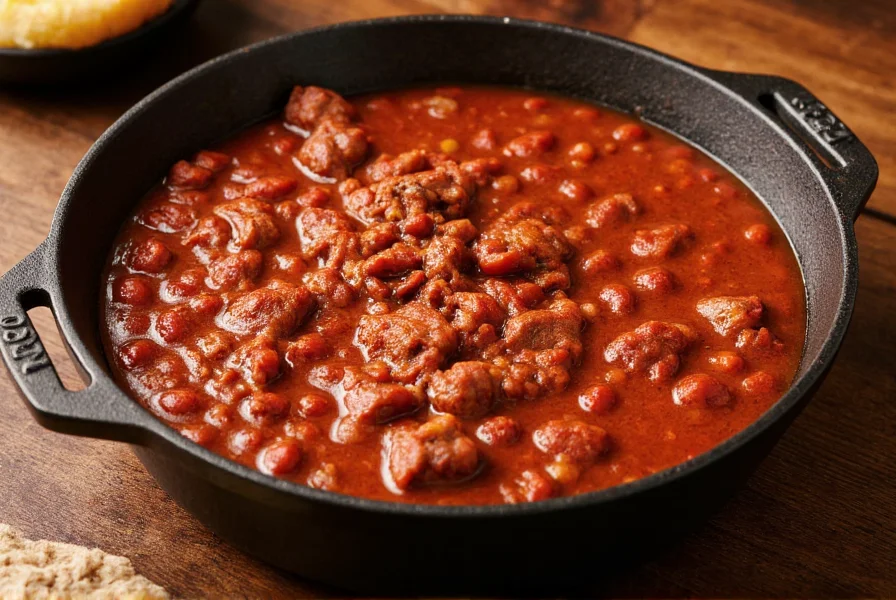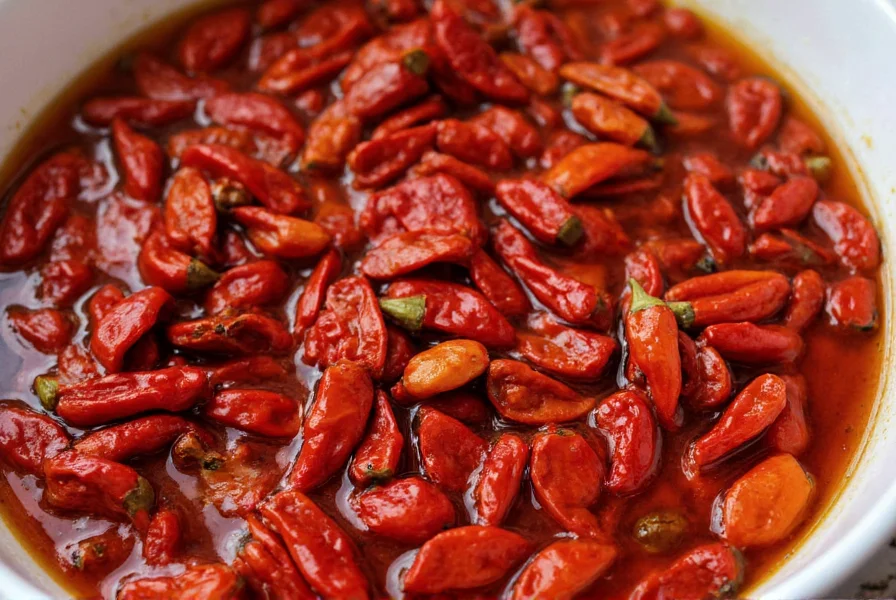For decades, a heated debate has simmered among chili enthusiasts: to include beans or not? While many modern recipes incorporate kidney or pinto beans, traditional chili con carne—particularly the Texas-style variety—strictly omits legumes. Understanding this culinary distinction reveals much about regional food traditions and authentic preparation methods.
The Origins of Beanless Chili
Chili's history traces back to the cattle trails of 19th century Texas, where cowboys needed portable, protein-rich meals that could simmer for hours over open fires. The original authentic texas chili recipe no beans consisted of just three components: beef, fat (usually suet), and dried chili peppers. Beans weren't part of this frontier cuisine—they required additional preparation time and water, resources often scarce on cattle drives.
The history of chili without beans shows how Mexican and Tejano cooking traditions influenced this dish. In Northern Mexico, where chili peppers grew abundantly, cooks developed meat stews seasoned with native chilies. When Anglo settlers arrived in Texas, they adapted these recipes, creating what would become known as chili con carne (chili with meat).
Regional Differences in Chili Preparation
Chili preparation varies dramatically across North America, reflecting local tastes and traditions:
| Region | Bean Policy | Signature Characteristics |
|---|---|---|
| Texas | Strictly no beans | Meat-forward, minimal spices, often no tomatoes |
| New Mexico | No beans | Features local Hatch chilies, often with pork |
| Midwest | Beans common | Sweeter profile, often includes tomatoes and beans |
| California | Optional | Often includes chocolate or coffee for depth |
The regional differences in chili preparation highlight why understanding local traditions matters when cooking authentic versions. In Texas chili competitions, bean inclusion automatically disqualifies entries—a testament to how seriously purists take this distinction.
Why Traditional Chili Excludes Beans
Several compelling reasons explain why no beans in chili for traditional preparations:
- Texture considerations: Beans break down during long cooking, creating an undesirable mushy consistency
- Flavor integrity: Purists argue beans dilute the rich meat and chili pepper flavors
- Historical accuracy: Beans weren't part of the original cowboy or Mexican recipes
- Cooking practicality: Beans require different cooking times than meat
Professional chili makers note that when preparing chili con carne without beans, the meat-to-liquid ratio becomes critical. Without beans to absorb excess liquid, careful attention to reduction ensures the perfect thick, meaty consistency.

Creating Authentic Beanless Chili: Key Elements
Mastering how to make chili without beans requires attention to several critical components:
Meat Selection
Chuck roast or brisket provide ideal marbling for slow cooking. Some Texas pitmasters prefer coarsely ground beef for better texture integration. The best meat for beanless chili should have 20-30% fat content to maintain moisture during long simmering.
Chili Peppers
Authentic recipes use dried peppers rather than powder:
- Ancho (mild, fruity)
- Guajillo (tangy, medium heat)
- Chipotle (smoky, hot)
Reconstitute dried peppers in hot water, then blend into a smooth paste for maximum flavor extraction—a technique that defines traditional chili without beans.
Cooking Technique
True Texas chili requires patience:
- Brown meat in batches to develop fond
- Sauté aromatics (onion, garlic) until caramelized
- Add chili paste and toast briefly
- Simmer covered for 3-4 hours until meat shreds easily
- Skim excess fat before serving
Avoid common mistakes like adding too much liquid upfront or rushing the simmering process. The common mistakes to avoid when making beanless chili often involve impatience with the slow cooking required for flavor development.

Serving Authentic Beanless Chili
Texas-style chili stands alone as a complete dish, traditionally served in a bowl with minimal accompaniments that might distract from its pure flavors. Common serving styles include:
- As a main course with cornbread on the side
- Over rice (though purists might frown)
- As a topping for hot dogs ("chili dogs")
- With traditional garnishes: diced onions, shredded cheese, oyster crackers
Unlike bean-based versions that often serve 6-8 people, authentic beanless chili recipe portions tend to be smaller due to its intense meat concentration—typically 4 servings from 2 pounds of meat.
Modern Adaptations While Respecting Tradition
While traditionalists maintain strict bean-free standards, contemporary cooks have developed respectful adaptations:
- Vegetarian versions: Using textured vegetable protein instead of meat (still no beans)
- Quick-cook methods: Pressure cooker adaptations that maintain flavor integrity
- Regional fusion: Incorporating local ingredients while preserving the beanless foundation
The key is maintaining the essential character of the dish while making practical adjustments—a balance that satisfies both tradition and modern cooking realities.
Frequently Asked Questions
Why do Texans insist on no beans in chili?
Texans consider beans a modern addition that dilutes the authentic flavor profile developed during cattle drive era cooking. The original chili con carne was a meat-focused stew where beans would have required additional preparation time and water—resources often scarce on cattle drives. Texas chili competitions explicitly prohibit beans, reflecting this deep cultural tradition.
Can I make chili without beans that's still thick and hearty?
Absolutely. The thickness in authentic beanless chili comes from proper reduction of the meat and liquid during slow cooking. Using well-marbled cuts like chuck roast (20-30% fat) helps create natural richness. Some cooks add a small amount of masa harina as a thickener, which enhances corn flavor without introducing bean texture. The key is simmering uncovered for the final 30-60 minutes to concentrate flavors and achieve that signature hearty consistency.
What's the difference between chili con carne and regular chili?
Chili con carne (literally "chili with meat") specifically refers to the traditional beanless version made with meat, chili peppers, and spices. "Regular" chili often includes beans and sometimes tomatoes, representing more modern adaptations. Authentic chili con carne focuses on the pure interplay of meat and chili pepper flavors without additional ingredients that might mask these essential components.
How do I add depth to beanless chili without using beans?
Professional chili makers use several techniques to build depth in beanless versions: roasting meat bones for stock, using multiple types of dried chili peppers (ancho, guajillo, chipotle), adding a small amount of coffee or dark chocolate, and finishing with a splash of vinegar or lime juice to brighten flavors. The long simmering time—typically 3-4 hours—allows these flavors to meld naturally without needing beans for texture or bulk.











 浙公网安备
33010002000092号
浙公网安备
33010002000092号 浙B2-20120091-4
浙B2-20120091-4